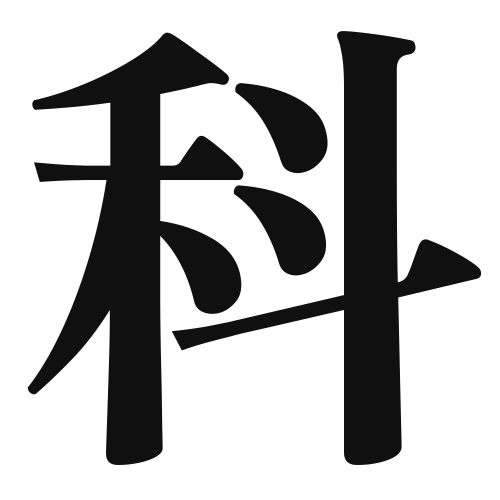1. Overview of Meaning
The kanji “科” (ka) generally means “department,” “section,” or “branch.” It is often used in academic and professional contexts to refer to specific fields of study or areas of expertise.
2. Formation and Radical
Formation of the Kanji: The kanji “科” is a phonetic-ideographic character (形声文字). It combines the radical for “plant” (禾) with a phonetic component that suggests its pronunciation.
Radical: The radical of “科” is “禾,” which relates to grains or plants, indicating a connection to growth or cultivation, often metaphorically linked to knowledge and learning.
3. Examples of Usage
Common Words and Phrases: Some frequently used terms include “学科” (gakka – academic discipline), “科目” (kamoku – subject), and “専門科” (senmonka – specialized field).
Example Sentences in Daily Conversation:
- 「あなたの専門科は何ですか?」 (Anata no senmonka wa nan desu ka? – What is your field of specialization?)
- 「この学科はとても人気があります。」 (Kono gakka wa totemo ninki ga arimasu. – This department is very popular.)
4. Synonyms and Antonyms
Similar Kanji: A similar kanji is “分野” (bunya), which also means “field” or “area,” but it is broader and can refer to various domains beyond academic contexts.
Opposite Kanji: An antonym could be “無” (mu), meaning “none” or “without,” as it represents the absence of a specific field or area.
5. Cultural and Historical Background
Relation to Japanese Culture: The concept of “科” is deeply embedded in Japanese education and professional systems, where specialization is highly valued.
Proverbs and Idioms: One relevant saying is “千里の道も一歩から” (Senri no michi mo ippo kara – A journey of a thousand miles begins with a single step), emphasizing the importance of starting in a specific field or discipline to achieve greater knowledge and success.
